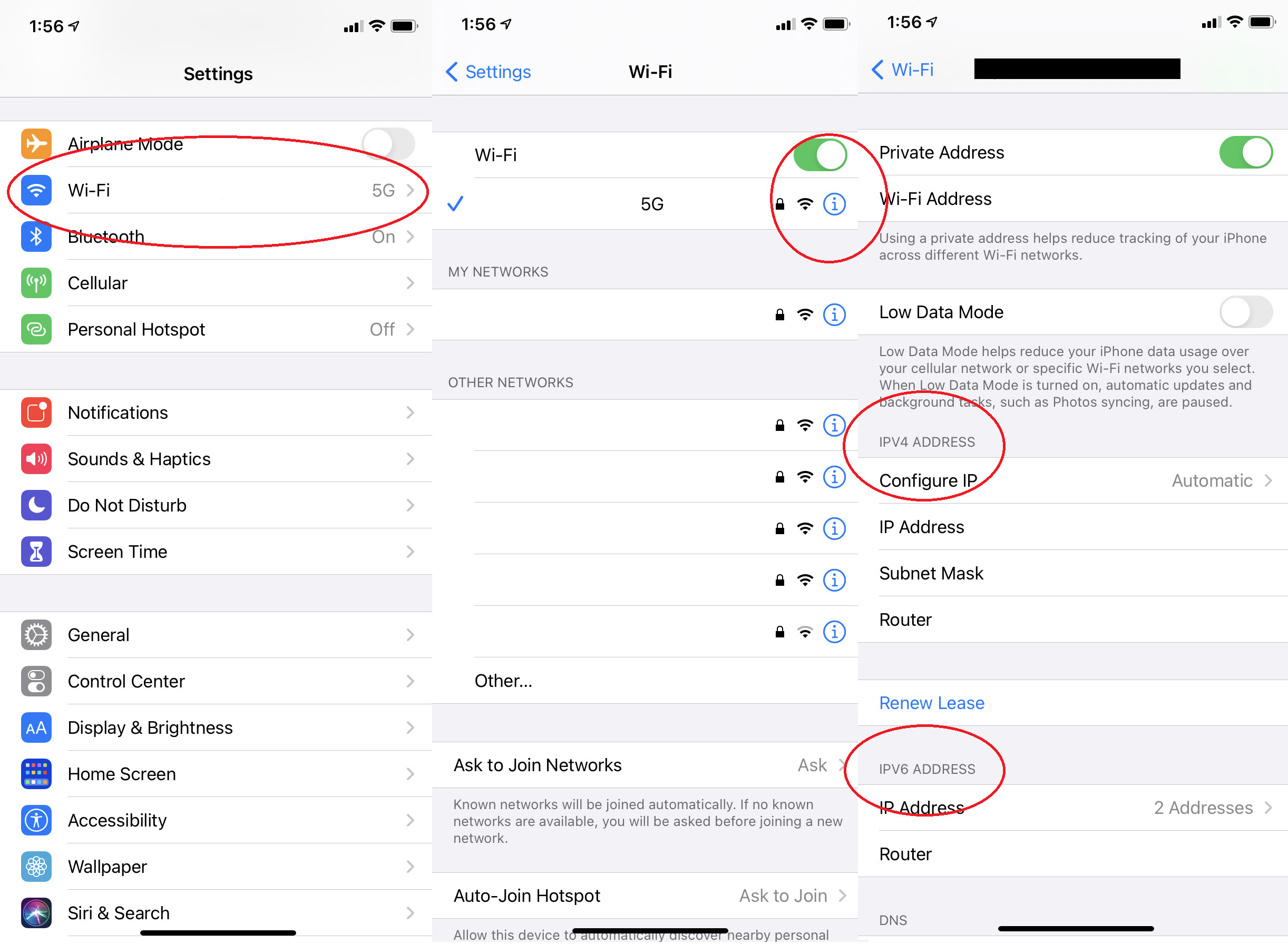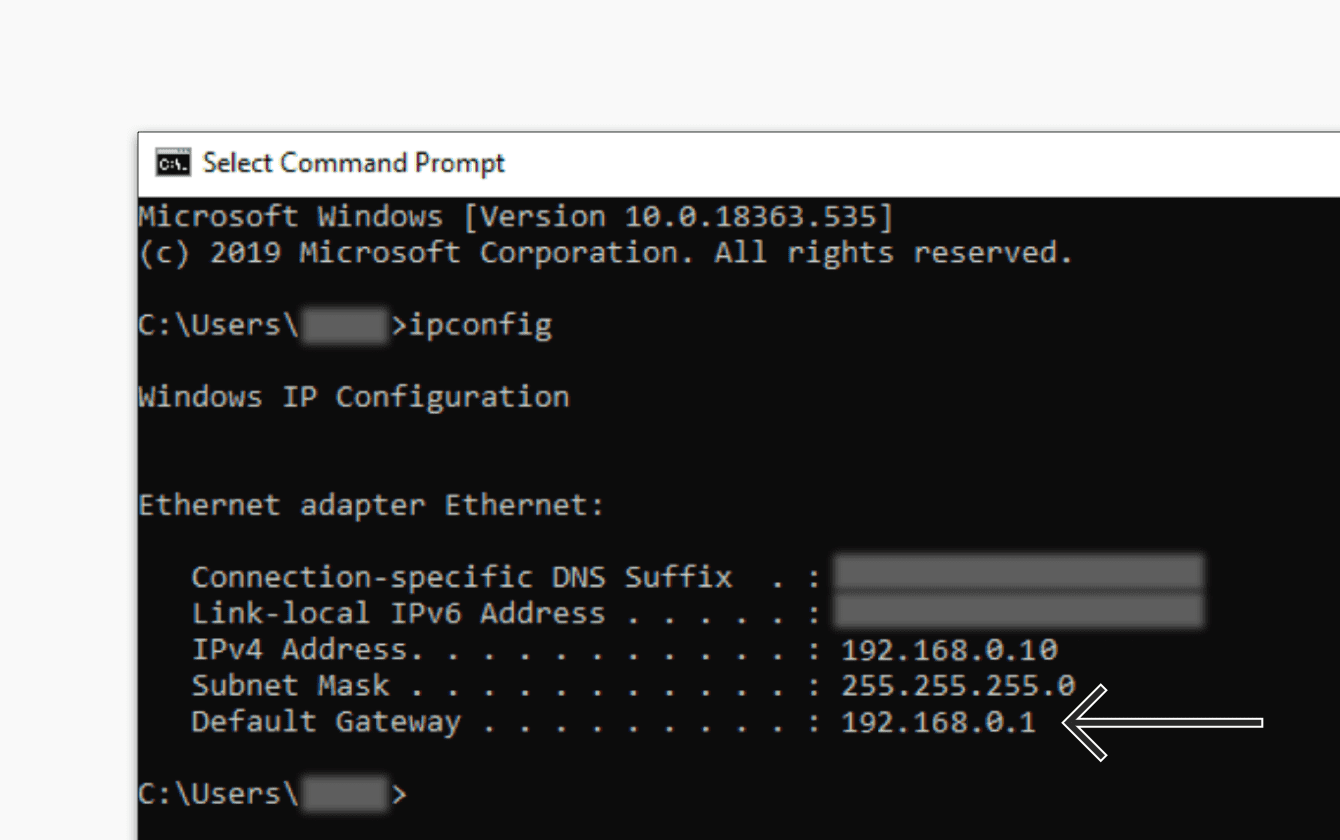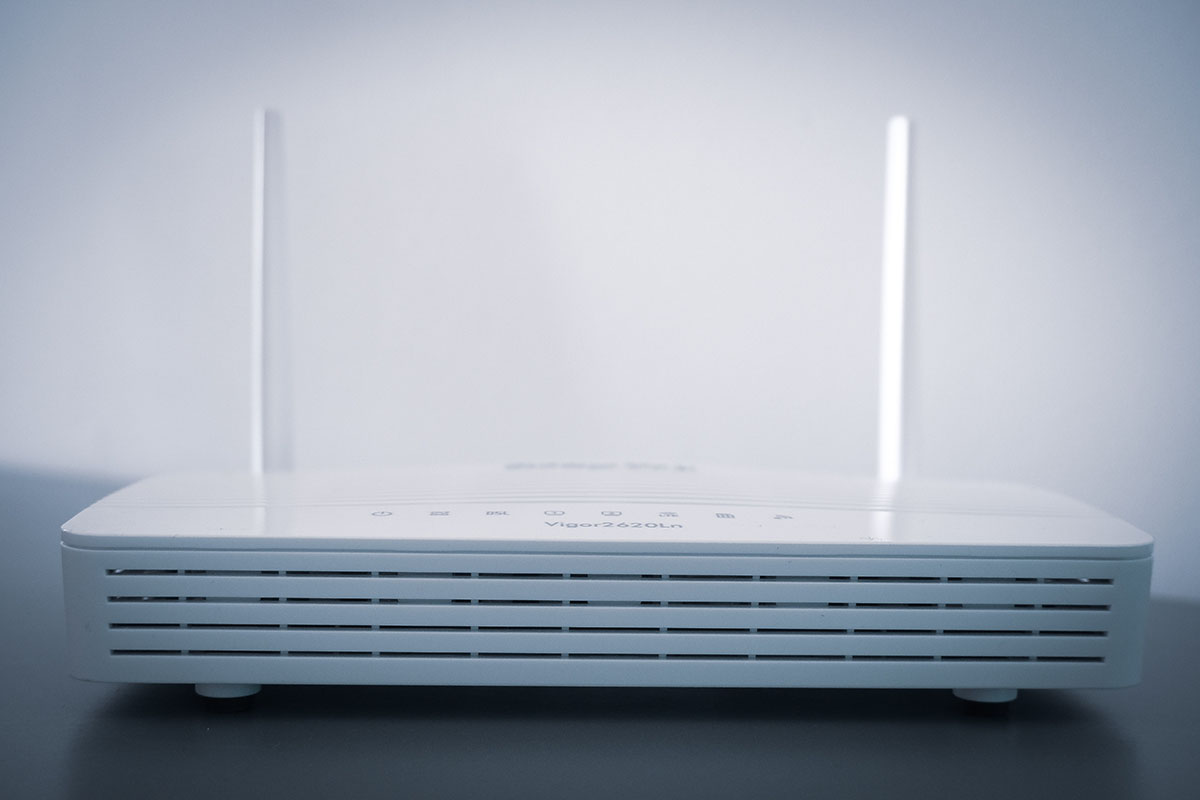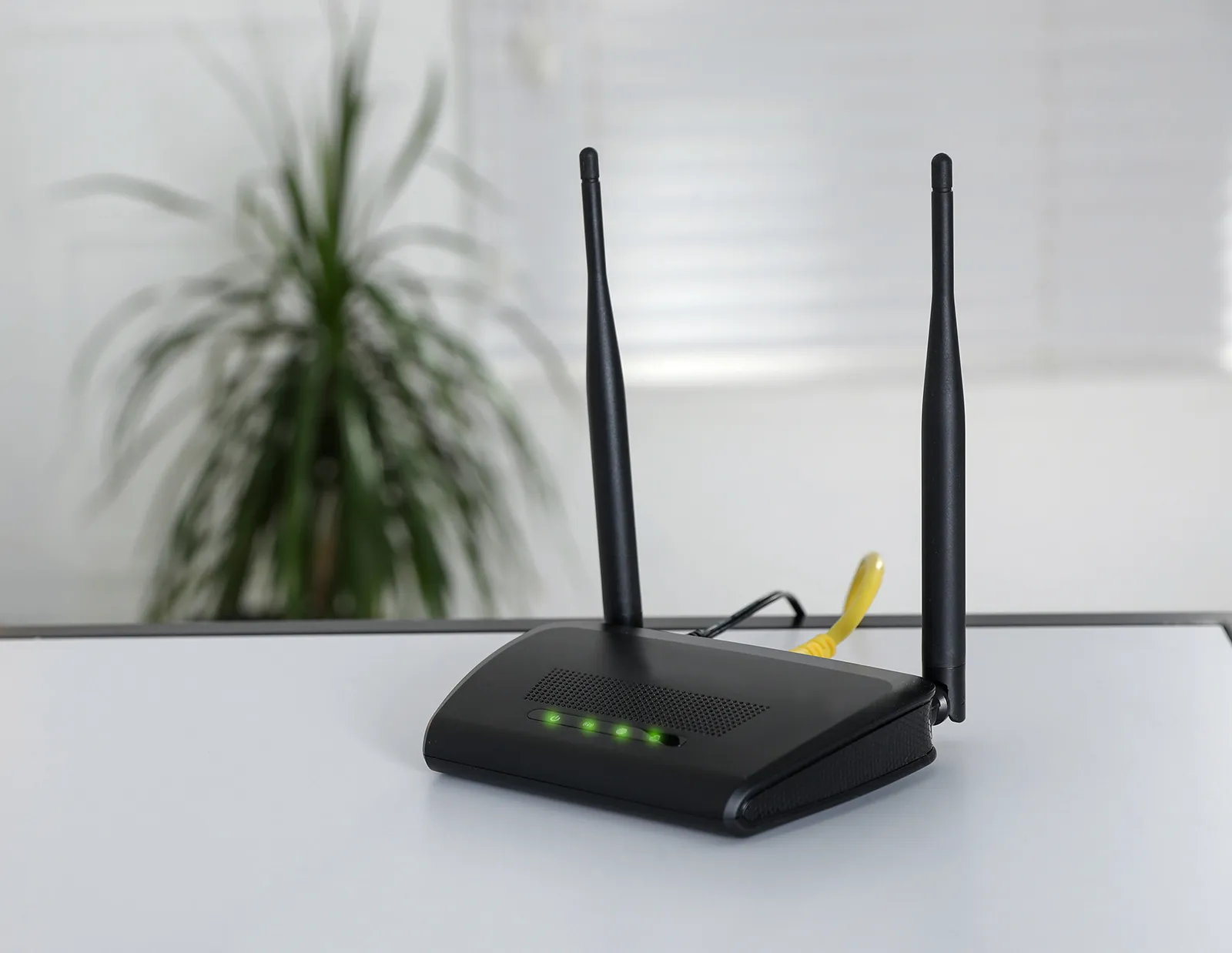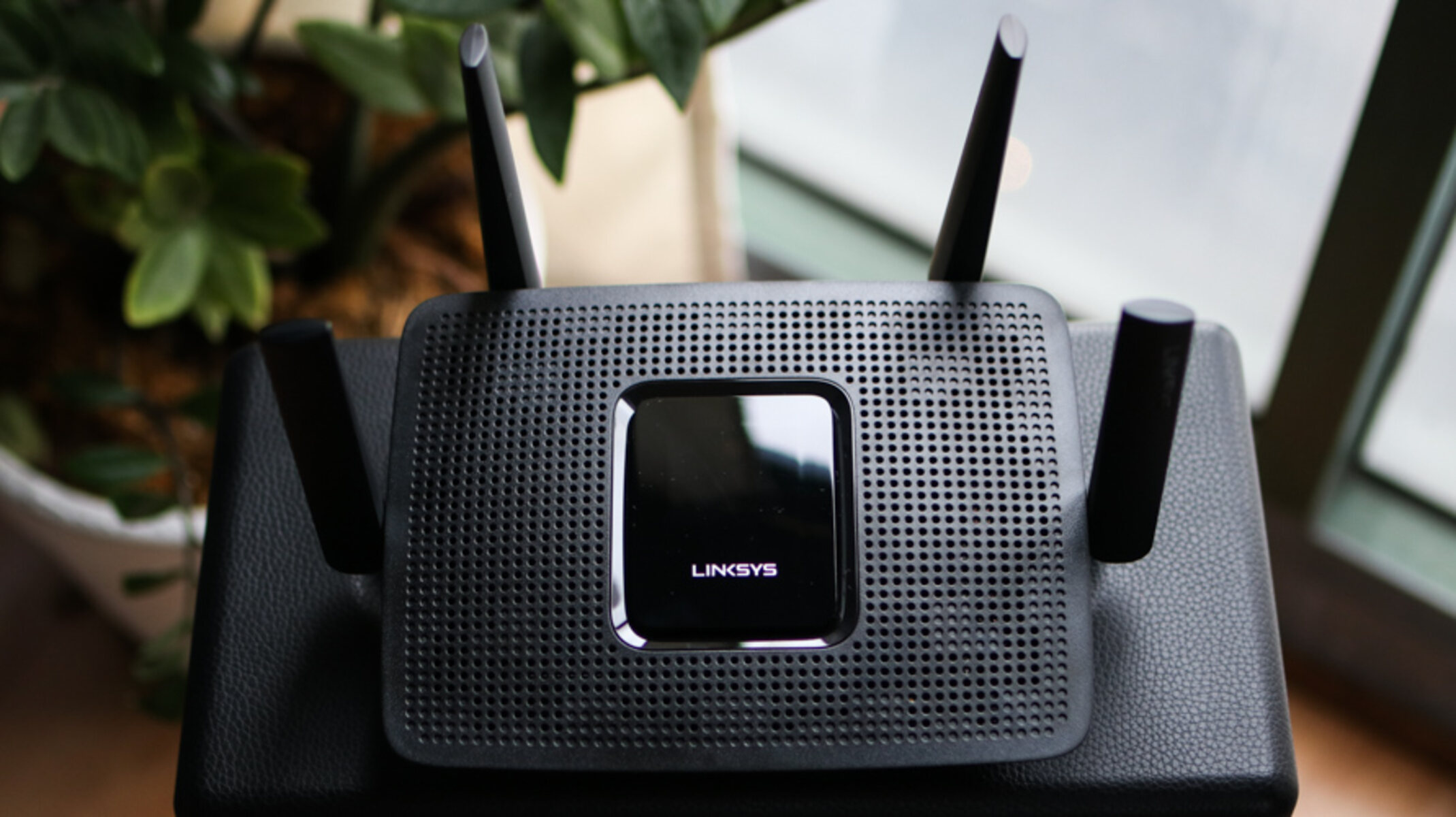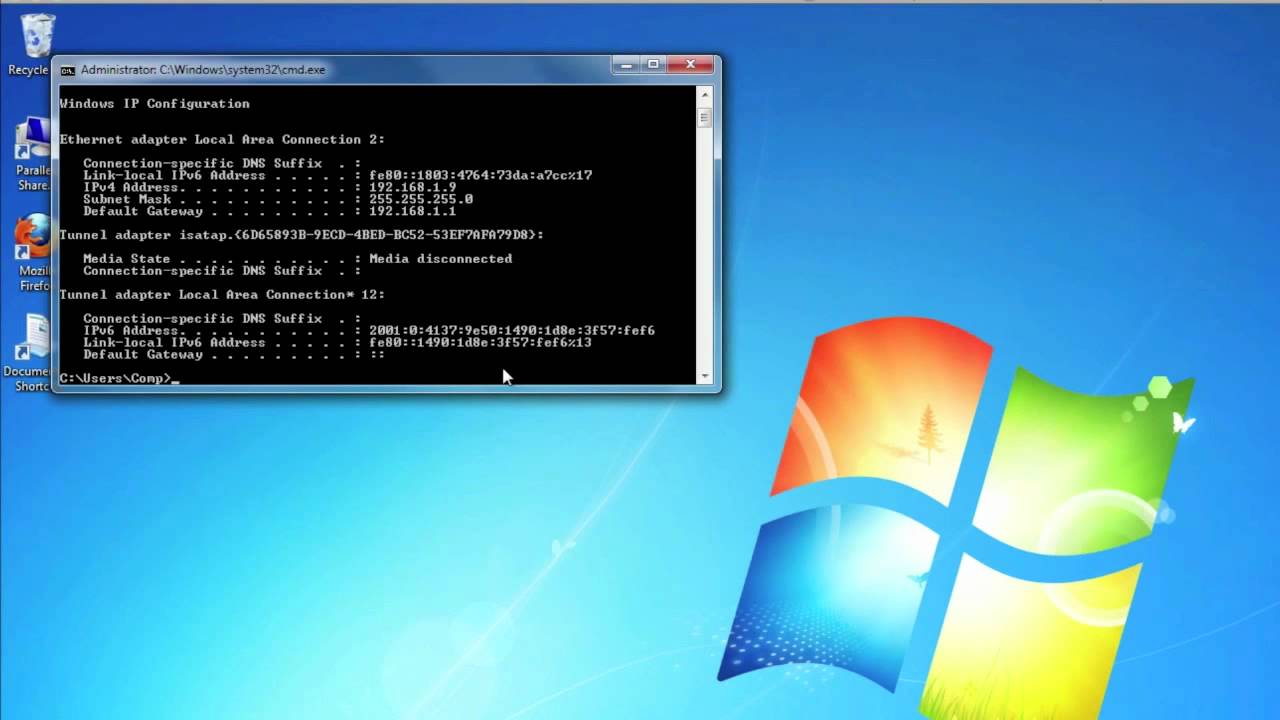Introduction
An IP address, short for Internet Protocol address, is a unique numerical label assigned to each device connected to a computer network. It serves as a way to identify and locate devices within a network or on the internet. Every time you connect to the internet, whether it’s through your computer, smartphone, or tablet, you are assigned an IP address.
But why would you need to find your IP address? Well, there are several reasons. First, knowing your IP address can help you troubleshoot network connectivity issues. Second, it allows you to access certain services or websites that only permit access from specific IP addresses. Lastly, it can be useful for checking your internet service provider’s speed and ensuring your privacy and security online.
In this article, we will explore various methods to find your IP address. Whether you are using a Windows computer, a Mac computer, a mobile device, or even if you want to find the IP address of a website, we have got you covered. So, let’s dive in and discover the different ways to locate your IP address.
What is an IP Address?
An IP address, or Internet Protocol address, is a unique string of numbers and/or letters that identifies a device connected to a network. It acts like a digital address, enabling devices to communicate with each other over the internet.
IP addresses consist of two main types: IPv4 and IPv6. IPv4 addresses are the traditional format, using four sets of numbers separated by periods (e.g., 192.168.0.1). However, with the increasing number of internet-connected devices, the pool of available IPv4 addresses is rapidly depleting. To accommodate this growth, IPv6 was introduced, which uses a longer alphanumeric format (e.g., 2001:0db8:85a3:0000:0000:8a2e:0370:7334).
IP addresses serve multiple purposes. First, they provide a way for devices to locate and communicate with each other on a network. When you visit a website, send an email, or stream a video, data is sent between different devices using IP addresses.
Second, IP addresses help in identifying the geographical location of a device. By analyzing the IP address, websites and online services can provide region-specific content or customize their offerings based on your location.
Lastly, IP addresses play a crucial role in internet security. They can be used to block malicious traffic, trace online activities back to specific devices, and enforce access restrictions or permissions.
Overall, IP addresses are essential for establishing connections, routing data, and enabling communication across the internet. Whether it’s your home network, office network, or the vast online infrastructure, IP addresses provide the foundation for seamless connectivity and interaction.
Why do you need to find an IP address?
Finding your IP address is important for several reasons. Let’s explore some of the most common scenarios where knowing your IP address can be beneficial:
- Troubleshooting network issues: If you’re experiencing connectivity problems with your internet connection or network, knowing your IP address can help you diagnose and troubleshoot the issue. Network administrators often rely on IP addresses to identify and resolve network-related problems.
- Accessing IP-restricted services: Certain services or websites may restrict access based on IP addresses. By finding your IP address, you can determine if you have the necessary permissions to access a specific service or site. For example, some streaming platforms may only allow access from certain regions, so knowing your IP address can help you determine if you meet the required criteria.
- Verifying internet speed: Your IP address can be used to check the speed of your internet connection. Various online speed testing tools rely on your IP address to measure the download and upload speeds of your connection. This information can be valuable when troubleshooting slow internet or comparing your speeds to your internet service provider’s advertised rates.
- Ensuring privacy and security: Knowing your IP address is essential for safeguarding your online privacy and security. By being aware of your IP address, you can take steps to protect your data and identity. This may include setting up firewalls or VPNs (Virtual Private Networks) to encrypt your internet traffic and prevent unauthorized access to your device.
- Monitoring network activity: Network administrators may need to monitor and track network activity for security or management purposes. Your IP address plays a crucial role in identifying devices on the network and tracking their activity. By finding your IP address, administrators can keep a close eye on network traffic and detect any suspicious or unauthorized behavior.
These are just a few examples of why finding your IP address can be beneficial. Whether you’re troubleshooting network issues, accessing IP-restricted services, verifying internet speed, ensuring privacy and security, or monitoring network activity, having knowledge of your IP address is a fundamental step.
Methods to Find Your IP Address
There are several methods you can use to find your IP address, depending on the device and operating system you are using. Let’s explore some of the most common methods:
- Using the Command Prompt on a Windows computer: On a Windows computer, you can find your IP address by opening the Command Prompt and entering the “ipconfig” command. This will display detailed information about your network connection, including your IP address.
- Using the Network Settings on a Mac computer: If you’re using a Mac computer, you can find your IP address by going to the “System Preferences” and clicking on the “Network” option. Here, you can select the active network connection and view the IP address associated with it.
- Using a website or online tool: There are numerous websites and online tools available that can display your IP address instantly. Simply visit one of these sites using your web browser, and your IP address will be shown on the page.
- Finding the IP address of a website: If you want to find the IP address of a specific website, you can use the “nslookup” command in the Command Prompt or Terminal. Simply enter the command followed by the website URL, and it will provide you with the associated IP address.
- Using a mobile device: To find the IP address on a mobile device, go to the device’s settings and navigate to the network or Wi-Fi settings. Here, you can view the IP address associated with your current network connection.
These are just a few methods you can use to find your IP address. Depending on your device and operating system, there may be additional methods or variations of these methods available.
Keep in mind that IP addresses can change over time, especially for devices that are connected to networks with dynamic IP allocation. If you need to find your IP address frequently, it’s recommended to use a method that provides real-time updates or automate the process using scripts or tools.
Using the Command Prompt on a Windows Computer
If you’re using a Windows computer, one of the easiest and quickest ways to find your IP address is by using the Command Prompt. Here’s how:
- Open the Command Prompt by pressing the Windows key + R, then typing “cmd” in the Run dialog box and pressing Enter. Alternatively, you can search for “Command Prompt” in the Start menu and click on it.
- Once the Command Prompt window opens, type “ipconfig” and press Enter. This command stands for “IP Configuration” and displays detailed information about your network settings.
- Scroll through the results until you find the network connection you’re currently using. It will typically be labeled as “Ethernet adapter” or “Wi-Fi adapter” followed by the network name.
- Look for the line that starts with “IPv4 Address” or “IPv6 Address” depending on your network configuration. The value next to it is your IP address.
It’s important to note that if your computer is connected to multiple networks, you will see multiple entries with different IP addresses. Make sure to identify the IP address associated with the network you’re interested in.
Using the Command Prompt is a reliable method to find your IP address on a Windows computer. It provides detailed network information and allows you to quickly identify your IP address without the need for any additional tools or websites.
Remember that IP addresses on home networks may change if your router uses dynamic IP allocation. In such cases, you may need to repeat these steps periodically to obtain your updated IP address.
Using the Network Settings on a Mac Computer
If you’re using a Mac computer, finding your IP address can be done easily through the Network settings. Follow these steps:
- Click on the Apple menu in the top-left corner of your screen and select “System Preferences.”
- In the System Preferences window, click on the “Network” icon. This will open the network settings for your Mac.
- Select the network connection you are currently using, such as Wi-Fi or Ethernet, from the left sidebar.
- Once you’ve selected the network connection, look for the “Status” label on the right side of the window. Your IP address will be displayed next to this label.
On a typical Mac system, the IP address is shown as a series of numbers separated by periods (IPv4 address) or as a longer alphanumeric string (IPv6 address). Take note of the IP address for future reference or troubleshooting purposes.
In case you have multiple network connections enabled on your Mac, such as Wi-Fi and Ethernet, make sure to select the correct connection to view its corresponding IP address.
Utilizing the Network settings on a Mac provides a straightforward method to find your IP address without the need for external tools or commands. It allows you to quickly access the network configuration of your Mac and retrieve the IP address associated with your active connection.
Keep in mind that if your Mac is connected to multiple networks, each network connection may have a different IP address. Ensure that you identify the IP address relevant to the network you are interested in.
Using a Website or Online Tool
If you prefer a quick and hassle-free way to find your IP address without diving into system settings or command prompts, using a website or online tool can be an ideal option. Here’s how you can find your IP address using a website or online tool:
- Open a web browser on your device.
- Visit a trusted website that provides IP address information. There are numerous websites available, such as “WhatIsMyIP.com,” “IPChicken.com,” or “WhatIsMyIPAddress.com.”
- As soon as the webpage loads, it will automatically display your IP address on the screen.
These websites work by retrieving and displaying the IP address associated with your device’s current internet connection. They provide a convenient way to quickly obtain your IP address, especially if you’re not familiar with command line interfaces or system settings.
Using an online tool eliminates the need for manual configuration or any technical knowledge. It’s a simple and user-friendly method that can be accessed from any device with a web browser and internet connection.
However, keep in mind that when using online tools or websites to find your IP address, ensure that you trust the source and use reputable websites. Additionally, exercise caution if any personal information or additional permissions are requested by the site.
Overall, utilizing a website or online tool is a straightforward and convenient method to quickly find your IP address without any technical know-how.
Finding the IP Address of a Website
Knowing the IP address of a specific website can be useful for various reasons, such as troubleshooting network issues or conducting advanced network analysis. Here’s how you can find the IP address of a website:
- Open the Command Prompt on your Windows computer or the Terminal on your Mac computer.
- Type the “nslookup” command followed by the website URL or domain name you want to find the IP address for. For example, to find the IP address of “www.example.com,” enter “nslookup www.example.com” in the Command Prompt or Terminal.
- Press Enter to execute the command.
- After a brief moment, the Command Prompt or Terminal will display the IP address of the website.
This method uses the “nslookup” (name server lookup) command to query the DNS (Domain Name System) and retrieve the IP address associated with the provided website URL.
Alternatively, you can use online tools or websites specifically designed to find the IP address of a website. These tools typically require you to enter the website URL and provide you with the corresponding IP address.
By finding the IP address of a website, you can gain insights into its hosting location, perform network diagnostics, or even bypass certain access restrictions that may be in place.
Remember that websites may have multiple IP addresses associated with different servers or locations. In such cases, the tool or command used will provide all the IP addresses associated with the website, allowing you to choose the most appropriate one for your use case.
Knowing the IP address of a website can be helpful for various purposes, including troubleshooting network issues, monitoring website traffic, or performing advanced network analysis.
Using a Mobile Device
If you’re using a mobile device, such as a smartphone or tablet, you can easily find your IP address through the device’s network settings. Here’s how:
- Open the Settings app on your mobile device.
- Look for the “Wi-Fi” or “Network” option, depending on your device.
- Select the Wi-Fi network that you are currently connected to.
- Within the Wi-Fi network settings, you will find the IP address associated with your device.
The exact location of the IP address may vary depending on your device and operating system. On some devices, you may find the IP address displayed directly, while on others, you may need to tap on a specific option or navigate to an advanced settings menu.
By accessing your mobile device’s network settings, you can quickly find your IP address without the need for additional tools or commands. It provides a straightforward method to retrieve the IP address associated with your current network connection.
It’s important to remember that if you switch between Wi-Fi networks or mobile data, your IP address may change accordingly. Therefore, if you need to find your IP address regularly, make sure to check it while connected to the desired network.
Whether you’re using an iPhone, iPad, or an Android device, finding the IP address on your mobile device is simple. Just navigate to the network settings, locate the Wi-Fi network you’re connected to, and view the IP address provided.
Knowing your mobile device’s IP address can be helpful for troubleshooting connectivity issues, configuring network-specific settings, or accessing network-restricted services or resources.
Conclusion
Locating your IP address is essential for various reasons, such as troubleshooting network issues, accessing IP-restricted services, verifying internet speed, ensuring privacy and security, or monitoring network activity. Thankfully, there are multiple methods available to find your IP address on different devices and operating systems.
If you’re using a Windows computer, you can use the Command Prompt to quickly retrieve your IP address. On a Mac computer, accessing the Network settings will provide you with the necessary information. Alternatively, you can use websites or online tools to find your IP address without the need for manual configuration. Additionally, it’s possible to find the IP address of a specific website using the “nslookup” command or online tools.
For mobile device users, the network settings will display the IP address associated with the current network connection. Whether you’re using an iPhone, iPad, or an Android device, finding the IP address is a simple process.
Remember that IP addresses can be dynamic and may change over time, especially on networks with dynamic IP allocation. Therefore, it’s essential to verify your IP address when needed, especially for troubleshooting or accessing IP-restricted services.
By utilizing these methods to find your IP address, you can enhance your understanding of network configurations, troubleshoot connectivity issues more effectively, and ensure optimal performance and security in your online activities.







